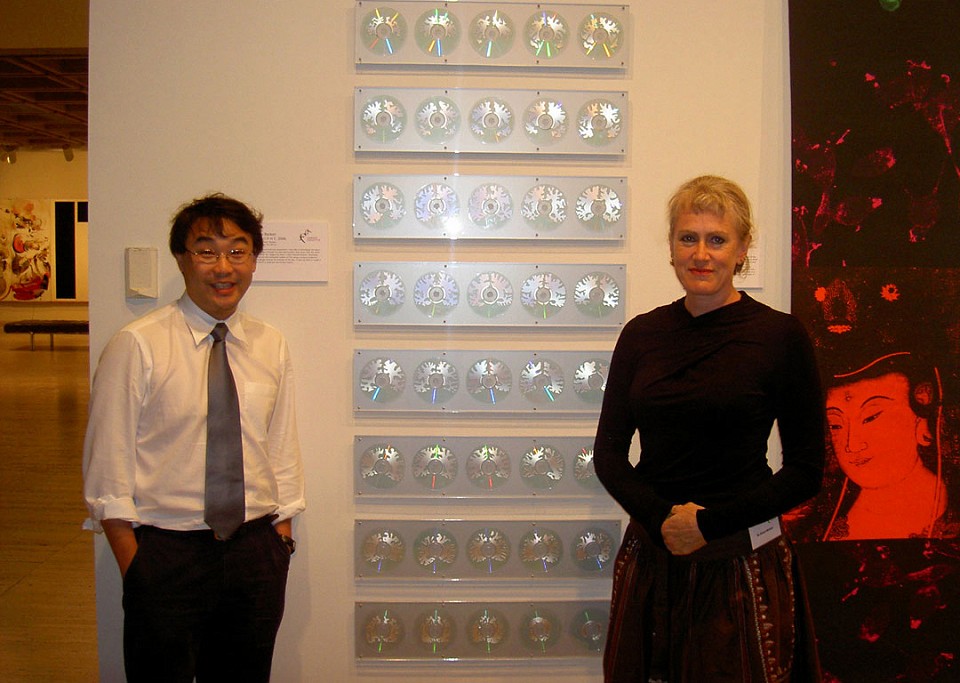artist statement
ATROPHY
What was it about this project that attracted you and or had meaning for you?
This project invited an opportunity to enter the doors of the Garvan Institute and to have a brief glimpse at the wide ranging research being undertaken.
How did the stimulus provided by your Garvan researcher’s image and/or visiting Garvan and meeting your researcher affect your creative process?
I was fortunate to work with two informed and sensitive researchers at the Garvan Institute. Initially I worked with Danielle Fischer, introducing me to current research concerning Alzheimers disease which she examined in her Honors Thesis. This thesis invited a number of questions about how an artist could examine or engage with the complexities of the significant effects this disease has, particularly upon the aging mind.
Alzheimers disease is “characterized by loss of memory. Difficulty in learning new tasks, decline in language skills, decline in manual and social skills, emotional unpredictability, difficulty in understanding routine tasks, poor judgment and planning skills, disorientation and change in personality” (from Danielle’s thesis)
One of the questions that I asked was…how is the decline of severe Alzheimers disease diagnosed? At this point I was introduced to Clement Loy. Clement has been instrumental in assisting my deeper understanding of this very sad and somewhat disturbing disease. With Clement’s guidance I was able to further investigate the way a brain changes through the slow deterioration that occurs with the onset of dementia and for those unfortunate to be afflicted with severe Alzheimers.
So I began the work ATROPHY, a slow removal process, sensitively working into the vulnerable surface of CDs, Using a surgical scalpel to painstakingly remove the memory of the disc. A slice of an MRI is depicted on each CD. I have interpreted 45 horizontal sections of a MRI scan, depicting a brain with servere atrophy. The CDs represent a brain scan from the frontal lobe through to the occipital lobe at the back of the brain. It is a gradual removal of the memory bank of a CD. It was my wish to create a work which is seductive and invites inquiry.
This was a slow and contemplative process creating a quiet place for reverie. ATROPHY is a work that allows for open discussion and further thought concerning Alzheimers disease.
What are your views about the interface between art and science, and has this project given you any new insights?
For many years my work has engaged applied science to develop my broad ranging art practice. Most notably I work with the physics of light, optics and communication technologies. I believe there is a sympathetic resonance between art and science. Both are interested in the exploration of ideas and ongoing inquiry.
alzheimers test
ORIENTATION
5 ( ) What is the (year) (season) (date) (day) (month)?
5 ( ) Where are we: (state) (county) (town) (hospital) (floor)?
REGISTRATION
3 ( ) Name 3 objects: 1 second to say each. Then ask the patient to repeat all 3 after you have said them. Give 1 point for each correct answer. Then repeat them until patient learns all 3. Count trials and record. Trials …..
ATTENTION and CALCULATION
5 ( ) Ask the patient to begin with 100 and count backwards by 7. Stop after 5 answers. 1 point for each correct answer.
RECALL
3 ( ) Ask for the 3 objects repeated above. Give 1 point for each answer.
LANGUAGE
2 ( ) Show the patient a wrist-watch and a pencil. Ask patient to name them. Give 1 point for each answer.
1 ( ) Ask the patient to repeat the sentence “No ifs, and or buts”. Score 0 or 1.
3 ( ) Give the patient a piece of paper and ask “Take the paper in your right hand, fold it in half, and put it on the floor.” Score 1 for each correct part of the 3-part command.
1 ( ) On a blank piece of paper, write the words ”CLOSE YOUR EYES”. Ask patient to read it and do what it says. Score 1 if the patient actually closes his eyes.
1 ( ) Ask the patient to write a sentence for you.
1 ( ) On a piece of paper, draw intersecting pentagons, each side about 1 inch, and ask patient to copy it exactly. All 10 angles must be present and 2 must intersect to score 1 point. Intersecting pentagons ( ) Assess the patient’s level of sensorium along a continuum: ALERT DROWSY STUPOR COMA
credits
Garvan Institute Researchers - Clement Loy and Danielle Fischer
















